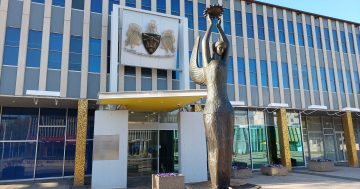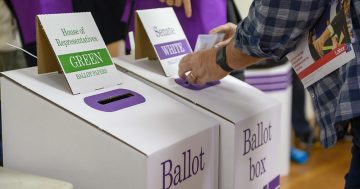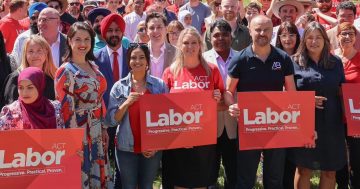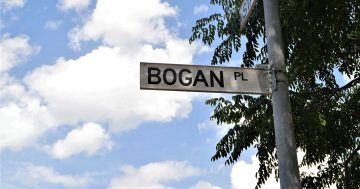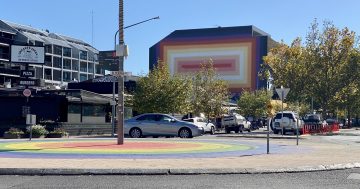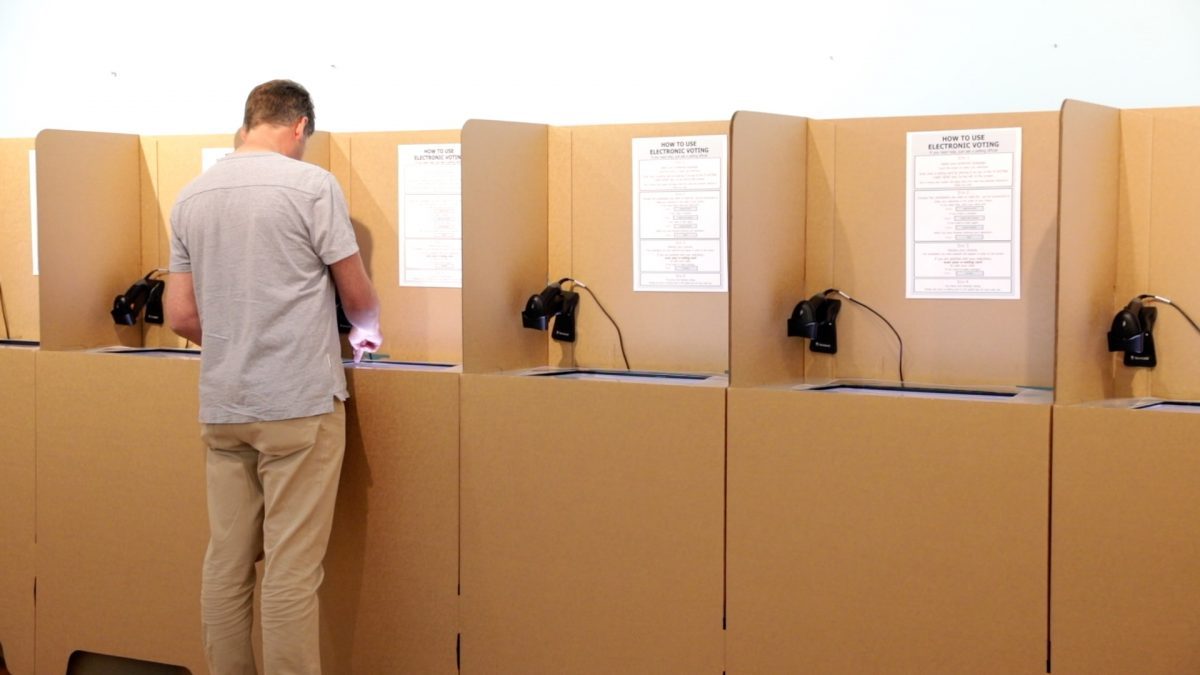
Who you vote for in the 2024 ACT election could look a bit different, depending on where you live and if proposed boundary changes are approved. Photo: Region.
Proposed changes to the ACT’s electoral boundaries would divide communities and revise Canberra’s history, according to the local resident whose submission sparked a public hearing.
Susanne Tongue, who lives in the Kurrajong electorate, objected to the ACT Redistribution Committee’s proposal to transfer Forrest and Red Hill from her electorate to Murrumbidgee.
In her six page objection, Ms Tongue argued the proposal was “illogical, irrational and unreasonable” and raised several concerns about the committee’s reasoning.
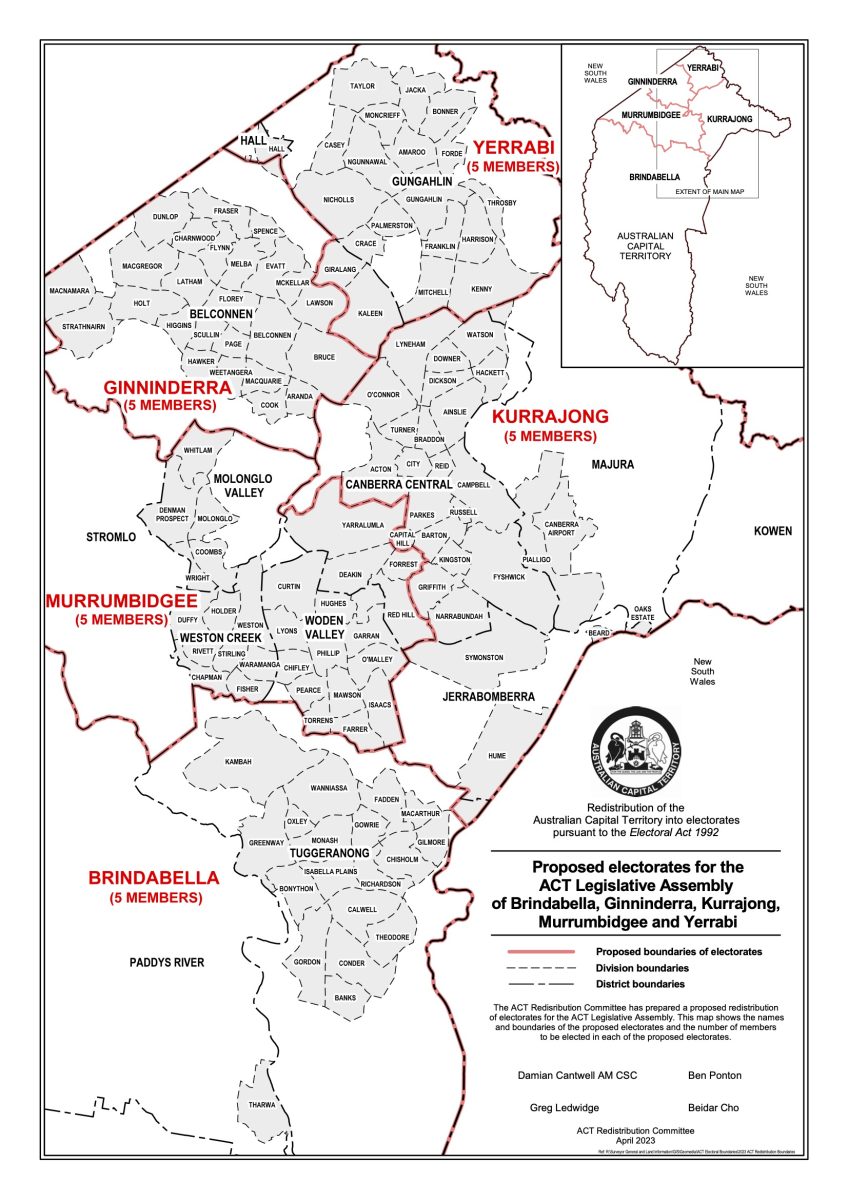
Map of proposed boundaries for the 2024 election. Photo: ACT Redistribution Committee.
Ms Tongue was one of five Canberrans to submit an objection, but only hers was found to raise matters not previously put before the committee.
“To remove [Forrest] from Canberra Central while referring to the newer suburbs of Lyneham and Dickson as Canberra Central is revisionist history,” Ms Tongue wrote in her objection.
She argued Forrest and Old Red Hill were part of the original Inner South and had maintained strong social, economic, transport and physical links with the Inner South and its suburbs.
The Canberra Central district has already been divided between electorates, with the suburbs of Deakin and Yarralumla joining the Murrumbidgee electorate before the last 2020 territory election.
However, Ms Tongue argued the proposal to further divide the district by transferring the suburbs of Red Hill and Forrest in particular out of their traditional electorate, crossed a bright line.
“It has to be recognised that the Inner South is a community of interest, [meaning] the shops, schools, churches, sporting groups and things of interest that join people together,” she said.
“[They] are really important for a variety of reasons, including wellbeing, so you don’t want to do anything that splits up these communities and this is an example of splitting a community.”
Ms Tongue said she was concerned this “splitting” of her local community would also make it more difficult for members of the legislative assembly to effectively represent the Inner South.
A report on the proposed changes to electoral boundaries published by the Redistribution Committee this year noted “a policy of, where possible, avoiding splitting suburbs and districts”.
But the same report stated the committee unanimously held the view that increasing enrolment in Murrumbidgee was best addressed through the reallocation of Red Hill and Forrest.
Voter enrolment is monitored to ensure the legislated quota of about one-fifth of the ACT’s enrolled electors in each of the jurisdiction’s five electorates is maintained. While in this case the Kurrajong and Murrumbidgee electorates meet current and projected enrolment quotas, the Red Hill-Forrest proposal was made to accommodate an increase in Brindabella’s enrolled population.
However, Ms Tongue raised questions about the reliability of the population projection for Red Hill of only 40 more electors by October 2024, in light of a major development in the suburb.
Several criteria, including community of interests, means of communication and travel, and physical features and area, are also typically considered when making redistribution proposals.
Region previously reported that in this case, these included a significant road link between Red Hill and the Murrumbidgee suburbs of Garran and Hughes, overcoming a large nature reserve and golf course in between, and that the Murrumbidgee suburbs of Yarralumla and Deakin were appropriately similar to Red Hill and Forrest in locality, culture, history and socioeconomics.
The ACT Electoral Commission will hold a public hearing on Thursday, 17 August. Participants wishing to appear must register with Elections ACT by Wednesday, 16 August.












